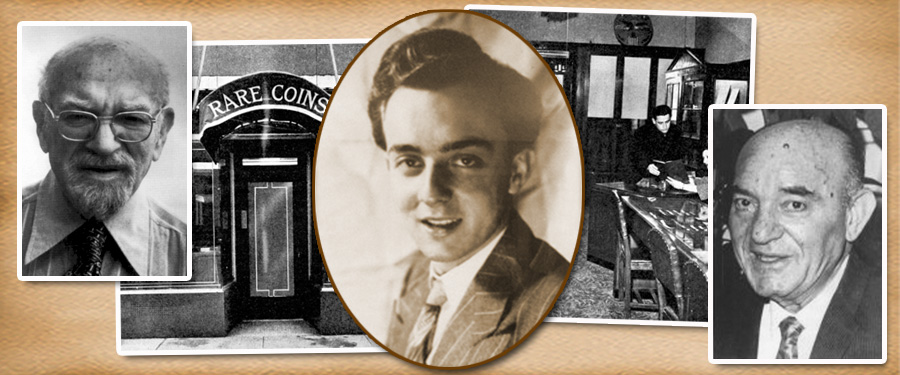
As a child, on the days I was free from public elementary school, mostly Saturdays and holidays, my father would take me to the store to do many chores. These included wiping the counters, cleaning the front windows, sweeping the floors, and other physical work. But, I often was allowed to open rolls of coins and sort them to be added to our stock. Other times I even greeted visitors if my dad and uncle were busy with others.
I should mention that at this time Stack’s, and most other dealers in New York and around the country, also had a Postage Stamp Department. Ours was not necessarily large, but many clients collected both coins and stamps and we wanted to be of service in any way we could. However, after a group of rarer stamps went missing on a Saturday near the end of the Depression, Stack’s gave up the postage stamp business. They sold off all their stamps in short order and specialized solely in numismatics.
Coin dealers also bought and sold gold. Some dealers even bought gold objects like jewelry, eyeglass frames and gold teeth. At this time, after the Gold Acts of 1933-1934 mandated that gold coins had to be surrendered to the government, many turned to coin dealers to receive a premium price that they couldn’t get from banks. Because gold collector coins were exempt, it was legal to own them so coin dealers could buy and sell gold coins to collectors as well as to the general public.
The buying and selling of gold coins helped dealers stay in business; it offered them a chance to make a few dollars on each purchase, and provide a place for sellers to sell their gold. It was the period of the Great Depression. The Stock Market had crashed, millions were out of work and had lost their savings and homes, and poverty was growing. People sold whatever valuables they could to survive. So coin dealers provided a means for many to sell, and at the same time provided a means for those who collected to add to their collections.
Not everyone was wiped out by the Depression. Some people, like Col. E.H.R. Green, were able to buy large quantities of gold coins during this period. Col. Green was able to assemble a massive collection of gold, including many duplicates. He loved owning the gold coins of the United States and specialized in the early issues from 1795 through 1861. Later, when parts of Green’s collection were sold by Chase National Bank (his executors), hundreds of early issues of U.S. gold were able to re-enter the market. If Col. Green and others had lacked the resources to buy much of the gold that became available during the Depression, it is likely that many items that are considered scarcities would be great rarities today, and some of today’s rarities would be impossible to find.
Stack’s was fortunate to have had funds available to continue business, even in the Depression. Because of this, collectors and the public came to Stack’s to sell their coins, gold, silver and copper from the United States and around the world. So we added to our inventory, sold most that we had on hand, and were able to help build some incredible collections, many of which we were later honored to sell.
In my next article I will tell of an exciting experience I had with Col. E.H.R. Green when I was just a youngster.





